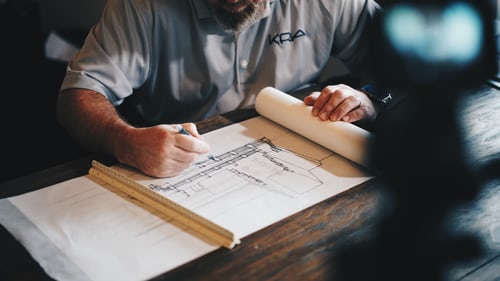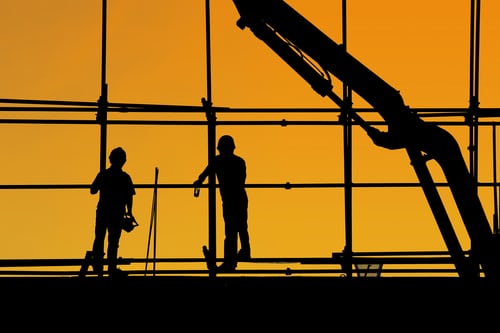When building a house, homeowners consider several things. Among these is how huge the building would be, how many bedrooms the structure can accommodate, where to place the kitchen area, and many more. Sometimes, environmental concerns are not prioritized. Homeowners should pay more attention to creating a safe home and environment rather than the structure’s aesthetics. To ensure that the air you will breathe at home is safe, building a radon-resistant home is essential.
How Radon Is Produced
For those who have never heard of what radon is, know that it is a kind of radioactive gas that comes from the soil. This gas is produced through the uranium breakdown that is present in most rocks and soil. As radon breaks down, it emits atomic particles that are incorporated in the air people breathe, posing risks to human health. Once a person is exposed to radon, it can increase the risk of respiratory diseases such as lung cancer.
The radon indoors is more harmful than the radioactive gas that you can find outside the home. It is because this chemical is diluted in the open air, but it could stay indoors. Radon can build up to dangerous levels at home, mainly if this gas is not eradicated. If a person inhales radon, its particles’ energy can change the DNA cell, increasing the risks of lung cancer.
How Radon Enters Your Home
The radioactive gas enters the house through the little openings and cracks in the foundation. It is where creating a radon-resistant home takes a vital role. If the house structure blocks this chemical, you can ensure that you and your loved ones are safe from inhaling this harmful chemical. If the house is not radon-resistant, then there’s a higher chance of having this toxic chemical inside the building.
The air pressure between the inside of a building and the soil surrounding it also plays a significant role in radon entry. For instance, radon will remain outside if the house’s air pressure is greater than the ground beneath it. If the air pressure of the building is lower than its surrounding soil, the radon gas will enter the home. It is essential to keep the pressure inside the house higher than the soil because if not, the building will act like a vacuum that sucks all the radon.
Things to Consider Before Building A Radon-Resistant Home

Before you talk to your builder and design a radon-resistant home, it is crucial to find the best location. Remember, radon comes from the soil; that’s why an area’s geology is a significant factor when building a house. The United States Environmental Protection Agency (EPA) collaborated with state and federal geologists to design maps that can predict every region’s potential radon levels.
The areas in the maps are labeled from Zone 1 to Zone 3. Zone 1 refers to places where the radon is potentially high. Meanwhile, Zone 3 consists of areas where radioactive gas is potentially low. It doesn’t mean that you cannot build houses in Zone 1 sites. If you are planning to construct a building there, you can include a radon control system. It is more affordable to add it to the total costs while building it rather than install the system after the house is built.
Here’s a map that can help you identify if your new house will be built in any of the three zones.
Radon-Resistant Home: Construction Tips and Techniques
You don’t need to be an expert in house building to create a radon-resistant home. Know that creating a radon-resistant house sometimes has simple techniques that are familiar to builders. Following the simple methods are sufficient enough to deter radon from entering the building. Here are some strategies to consider:
Install a layer of clean gravel or place it beneath the flooring system.
Place a four-inch layer of clean and coarse gravel below the foundation (slab). This layer allows radon and other soil gases to move freely underneath the house, creating an airflow layer or gas-permeable layer. If the gravel is too expensive or unnecessary in your area, you may consider perforated pipe and collection mat as alternatives.
Place polyethylene sheeting on top of the gravel layer.
Another technique to consider is installing a heavy-duty plastic sheeting or a vapor retarder on top of the gravel. Doing so prevents the radioactive gas from entering your home. Aside from that, it also keeps the concrete from clogging the gravel layer, especially when the slab is poured.
Install a gas-tight venting pipe starting from the gravel layer through the building to the roof.
You may install a three-inch or four-inch reliable PVC Schedule 40 pipe vertically from the gravel layer through the house’s conditioned space and roof. Doing so will help in safely venting the radon and other soil gases outside the home.
Ensure that the foundation is thoroughly sealed and caulked.
Make sure that all the cracks and little openings in the concrete foundation floor and walls are sealed and caulked. If so, the harmful soil gases will be prevented from entering your home.
Passive Radon System vs Active Radon System
These techniques make up a passive radon system. Sometimes, these construction techniques are enough to replace the vacuum effect that most houses experience. The passive radon system blocks the radon from entering by creating a pressure barrier. However, there could be instances when the passive radon system is not enough to prevent radon entry. If this is the case, an active radon system is recommended.
An active radon system is done by installing a fan that pulls the radon gas from the soil into the vent pipe. The radioactive gas is then exhausted outside the house. You can talk to your builder about which of the active to passive radon systems would work best for your home. As radon experts, they can help you identify which construction techniques can be applied in building the house, keeping you and your family safe from the radioactive gas.
As someone who plans to build a house, you must consider several factors to ensure that the building is safe from harmful gases like radon. You may talk to your builder and design a home using radon-resistant construction techniques. If the passive radon system is not enough, you may consider the active radon system. No matter what you use, what matters most is the safety of your family. Therefore, make sure that you will have a radon-resistant home.



